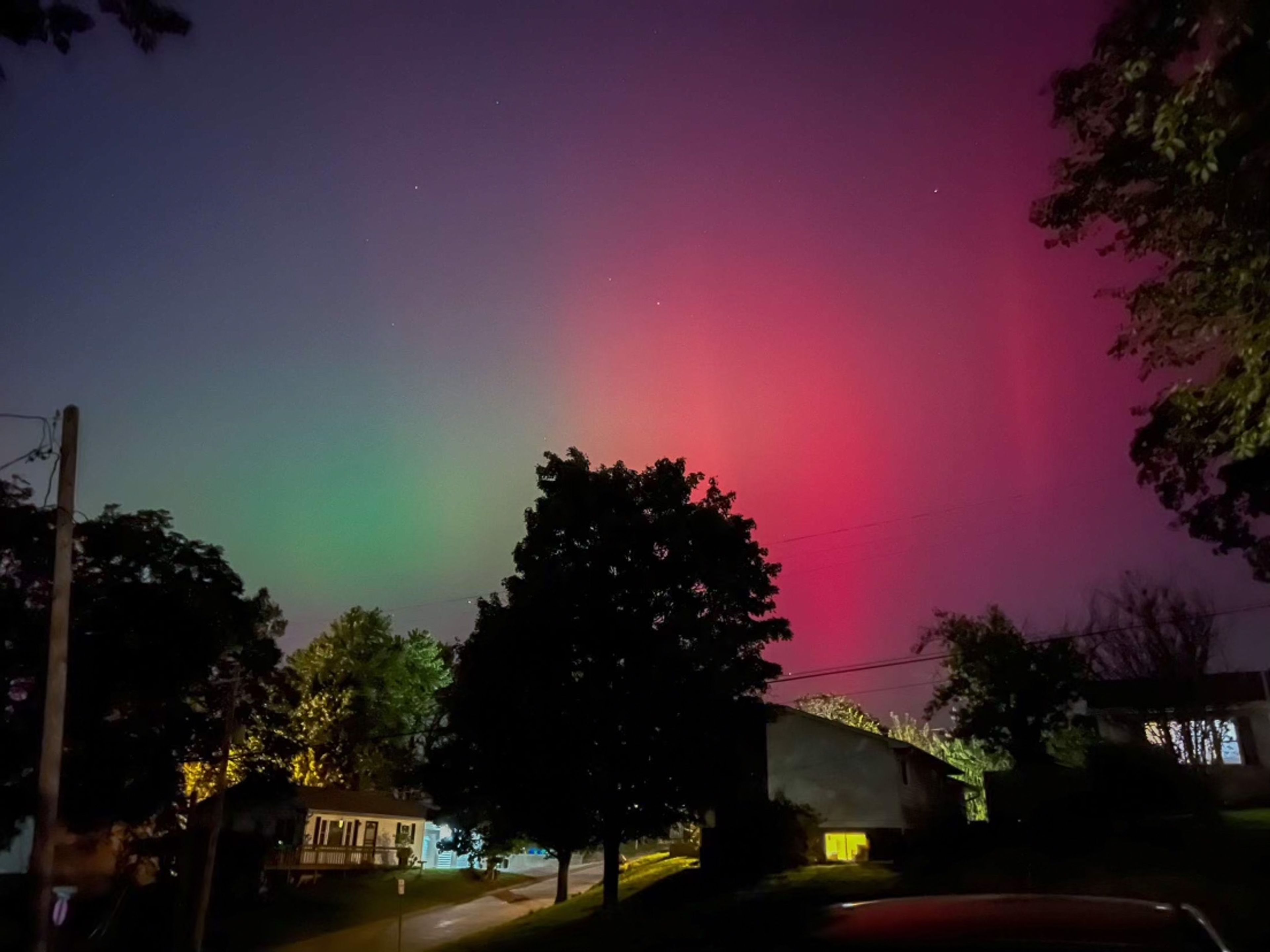Northern Lights fill the sky in Southeast Missouri
Witness a rare spectacle as the Northern Lights illuminate Southeast Missouri. Discover the science behind this stunning aurora and tips on capturing its vibrant colors with your camera.
A stunning display of the Northern Lights lit up the skies over Southeast Missouri on Thursday, Oct. 10, 2024, filling the night with shades of purple, pink, red and green.
The northern lights occur as a result from a coronal mass ejection from a solar flare emitted from the Sun.
Adjunct faculty member of the department of chemistry and physics Christina Adair explains how the lights shown were able to be seen.
“It’s basically atoms in our atmosphere are glowing because they get hit with these charged particles,” Adair said.
Associate professor of chemistry and physics Dr. Jonathan Kessler discusses how a solar flare transforms into an aurora-filled sky.
“Occasionally those dark spots flare. Those flares can emit a bunch of energy, which means usually like x-rays and other types of electromagnetic radiation. Sometimes, those solar flares can also lead to a coronal mass ejection, and that’s where the actual particles of the Sun kind of spit out from the sun,” Kessler said.
Kessler explains how the colors of the aurora are produced.
“Those charged particles interact with the atoms in our upper atmosphere to produce the beautiful colors that are in the Aurora Borealis,” Kessler said.
Kessler says the blue is produced by interaction with nitrogen, and the reds are produced by mixing with oxygen.
Adair explains the Sun’s 22-year cycle. Adair says the Sun will reach its solar maximum every 11 years, then will reach its solar minimum.
Dr. Joe Murphy, another associate professor of chemistry and physics, offered advice for those hoping to capture the aurora on camera.
She explains using a camera to capture the sky may be helpful if you are unable to see the aurora with the naked eye. Murphy says a camera can be more sensitive to light wavelengths, allowing it to capture the vibrant colors.
As the Sun approaches its solar maximum, Southeast Missouri residents may have more chances to witness the Northern Lights. Keep an eye on the skies in the coming - you never know what you might see.






